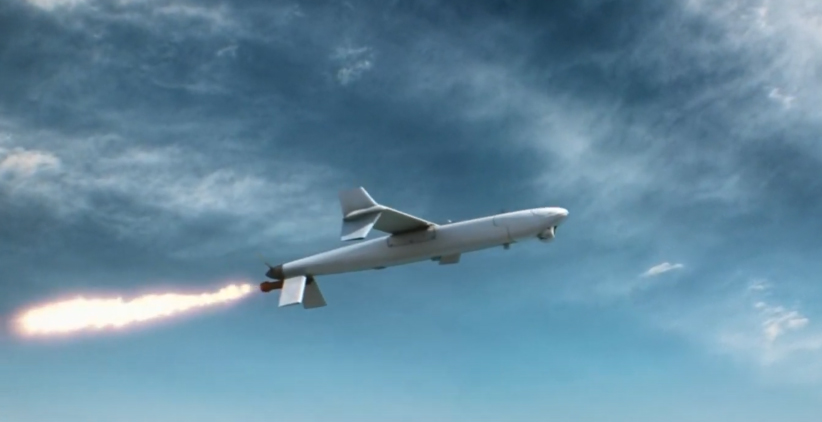A loitering munition (also known as a suicide drone or kamikaze drone) is a weapon system category in which the munition loiters around the target area for some time, searches for targets, and attacks once a target is located. Loitering munitions enable faster reaction times against concealed or hidden targets that emerge for short periods without placing high-value platforms close to the target area, and also allow more selective targeting as the actual attack mission can be aborted.
Loitering munitions fit in the niche between cruise missiles and unmanned combat aerial vehicles (UCAVs) sharing characteristics with both. They differ from cruise missiles in that they are designed to loiter for a relatively long time around the target area. In the case of UCAVs, loitering munition is intended to be expended in an attack and has a built-in warhead.
Loitering weapons first emerged in the 1980s for use in the Suppression of Enemy Air Defenses (SEAD) role against surface-to-air missiles (SAMs), and were deployed for the SEAD role in several military forces in the 1990s. Starting in the 2000s, loitering weapons have been developed for additional roles ranging from relatively long-range strikes and fire support down to tactical, very short-range battlefield systems that fit in a backpack. Loitering munitions have proliferated into use by at least 14 countries, with several different types in use as of 2017. The rising proliferation and the ability to use some systems as lethal autonomous weapons coupled with ethical concerns over such use have led to research and discussion by International humanitarian law scholars and activists.
Now, India too has joined the club. The SkyStriker is already under production in India to meet export orders. The contract was inked on 31 August and it entails the delivery to be completed within 12 months.
While the Indian Air Force has been operating the much larger Harop Loitering Munition for over a decade, this is the first time that the Army has sought a kamikaze drone, which can carry a warhead of 5-10 kg. Both Harop and SkyStriker are different. The Harop is much bigger and more lethal; it can be used to take out complete command and control structures. The SkyStriker is cheaper and can be used for tactical operations. This is a force enabler for the troops on the ground. SkyStriker can be used as a standalone system and also in multiples or as a swarm.
The SkyStriker fall onto a target and explode. It is launched through an automatic pneumatic launch platform, can reach a distance of 20 km in less than 10 minutes. The total range for the system is around 100 km. It can loiter and pursue a target for up to 2 hours with a 5 kg warhead or up to an hour with a 10 kg warhead. At maximum speed (100 knots), SkyStriker can reach a distance of 20 km within 6.5 minutes, reducing the loitering time by 15 minutes. Since SkyStriker has electric propulsion, it makes much less sound, allowing covert operations at low altitudes. The SkyStriker uses autonomous navigation during its cruising and loitering phases.
When preparing to strike, it navigates based on its electro-optical “lock” on the target. Explaining further, it said that during the strike phase, SkyStriker can dive at extremely high speeds of up to 300 knots and can withstand winds of up to 20 knots. SkyStriker enables the operator to abort a strike up to two seconds to impact, to re-engage and in case of lack of authorised targets to order a safe return home.
A self-explaining video is attached for reference.


